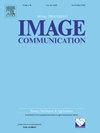触觉表面建模的信号处理:综述
IF 2.7
3区 工程技术
Q2 ENGINEERING, ELECTRICAL & ELECTRONIC
引用次数: 0
摘要
触觉反馈已经集成到虚拟现实和增强现实中,补充了声学和视觉信息,并为从医疗领域到娱乐和游戏等多个领域的全方位沉浸式体验做出了贡献。触觉技术涉及复杂的跨学科研究,包括传感、数据表示、交互渲染、感知和体验质量。标准的处理流程包括(I)使用传感器感知现实世界中的物理特征,(II)将收集到的信息建模并以某种数字格式存储,(III)将信息进行通信,最后(IV)通过适当的设备渲染触觉信息,从而产生感知上接近原始物理世界的用户体验(V)。在这些领域中,传感、渲染和感知已经被深入研究,并且是文献中不同综合调查的主题。不同的是,关于触觉表面建模和数据表示的研究仍然缺乏全面的剖析。在这项工作中,我们旨在从信号处理的角度概述触觉表面的建模和表示,涵盖了触觉信息获取与渲染和感知之间的各个方面。我们对触觉表面建模和数据表示的研究论文进行了分析、分类和比较,指出了现有的差距和可能的研究方向。本文章由计算机程序翻译,如有差异,请以英文原文为准。

Signal processing for haptic surface modeling: A review
Haptic feedback has been integrated into Virtual and Augmented Reality, complementing acoustic and visual information and contributing to an all-round immersive experience in multiple fields, spanning from the medical domain to entertainment and gaming. Haptic technologies involve complex cross-disciplinary research that encompasses sensing, data representation, interactive rendering, perception, and quality of experience. The standard processing pipeline, consists of (I) sensing physical features in the real world using a transducer, (II) modeling and storing the collected information in some digital format, (III) communicating the information, and finally, (IV) rendering the haptic information through appropriate devices, thus producing a user experience (V) perceptually close to the original physical world. Among these areas, sensing, rendering and perception have been deeply investigated and are the subject of different comprehensive surveys available in the literature. Differently, research dealing with haptic surface modeling and data representation still lacks a comprehensive dissection. In this work, we aim at providing an overview on modeling and representation of haptic surfaces from a signal processing perspective, covering the aspects that lie in between haptic information acquisition on one side and rendering and perception on the other side. We analyze, categorize, and compare research papers that address the haptic surface modeling and data representation, pointing out existing gaps and possible research directions.
求助全文
通过发布文献求助,成功后即可免费获取论文全文。
去求助
来源期刊

Signal Processing-Image Communication
工程技术-工程:电子与电气
CiteScore
8.40
自引率
2.90%
发文量
138
审稿时长
5.2 months
期刊介绍:
Signal Processing: Image Communication is an international journal for the development of the theory and practice of image communication. Its primary objectives are the following:
To present a forum for the advancement of theory and practice of image communication.
To stimulate cross-fertilization between areas similar in nature which have traditionally been separated, for example, various aspects of visual communications and information systems.
To contribute to a rapid information exchange between the industrial and academic environments.
The editorial policy and the technical content of the journal are the responsibility of the Editor-in-Chief, the Area Editors and the Advisory Editors. The Journal is self-supporting from subscription income and contains a minimum amount of advertisements. Advertisements are subject to the prior approval of the Editor-in-Chief. The journal welcomes contributions from every country in the world.
Signal Processing: Image Communication publishes articles relating to aspects of the design, implementation and use of image communication systems. The journal features original research work, tutorial and review articles, and accounts of practical developments.
Subjects of interest include image/video coding, 3D video representations and compression, 3D graphics and animation compression, HDTV and 3DTV systems, video adaptation, video over IP, peer-to-peer video networking, interactive visual communication, multi-user video conferencing, wireless video broadcasting and communication, visual surveillance, 2D and 3D image/video quality measures, pre/post processing, video restoration and super-resolution, multi-camera video analysis, motion analysis, content-based image/video indexing and retrieval, face and gesture processing, video synthesis, 2D and 3D image/video acquisition and display technologies, architectures for image/video processing and communication.
 求助内容:
求助内容: 应助结果提醒方式:
应助结果提醒方式:


